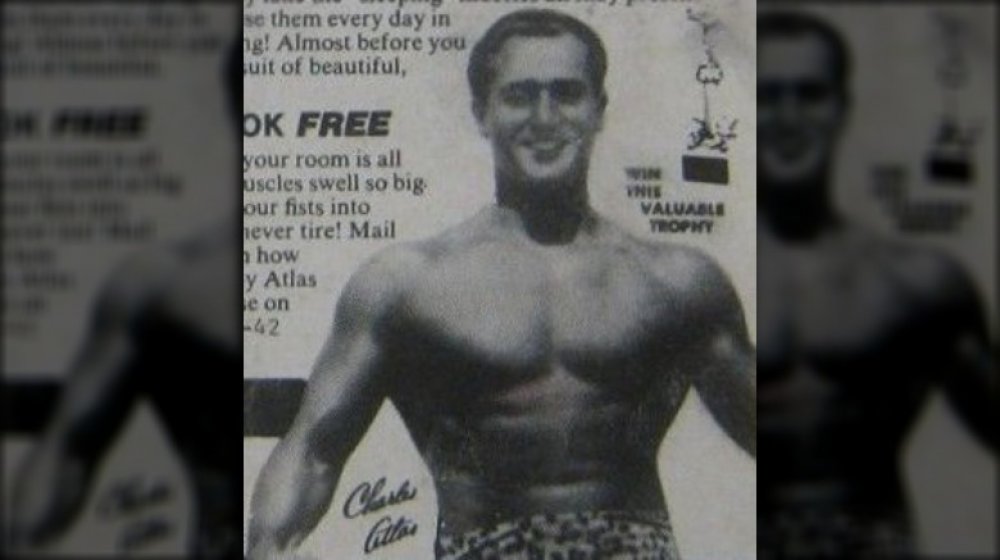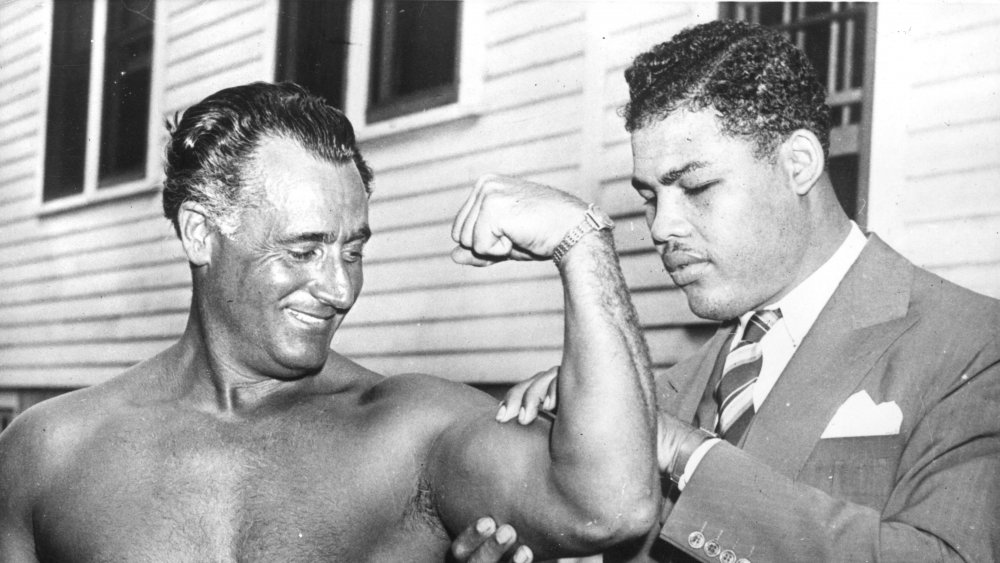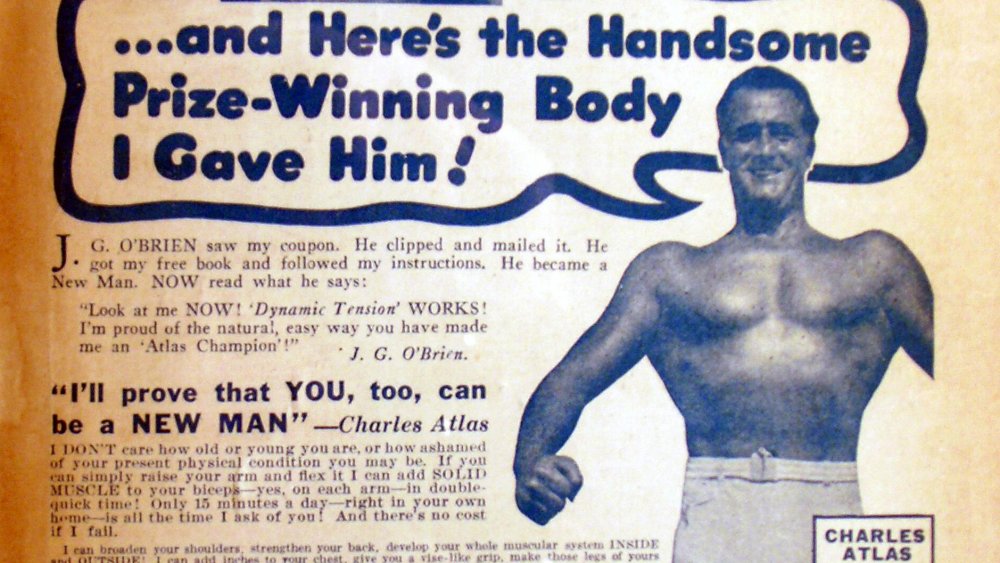Whatever Happened To Bodybuilder Charles Atlas?
It's happened to all of us at some point. You're enjoying a day at the beach with your best girl, sucking down a milkshake and quietly considering the joys of eating dairy on a hot summer day. Without warning, you're accosted by a muscular bully. He pushes you to the ground, maybe kicks your sand castle, and leaves you a pile of emasculated embarrassment. Your girlfriend, unable to combat her attraction to such a display of uncut manliness, walks off arm in arm with your assailant. They are later married in a lavish ceremony which they force you to plan for them as a final kick to the ribs. Guns N' Roses performs at the reception, and everyone high fives except you.
But don't book Axl and Slash just yet — if you know anything about anything, you know that Charles Atlas can help you regain possession of your fickle lady friend. In just fifteen minutes a day, he promised, he could make a new man out of you, bulking you up to the point where you, yourself, could be the one attracting ladies by wailing on skinny little nerds. It was a guarantee echoed across the better part of a century from the pages of comic books, a hearty call to arms. Thick arms. The kind that women touch and go "ooh!"
But who was Charles Atlas? An actual man, or merely the creation of an advertising firm? The answer, it turns out, is "both."
A flex for everything
The man who would become Charles Atlas was born Angelo Siciliano in 1892, an Italian lad who immigrated to New York around the time of his 12th birthday. According to Britannica, he really was a scrawny kid who suffered beat downs from neighborhood bullies and a real piece of work of an uncle. Not having much money, but wanting to get that "leave me the hell alone" body that he'd seen displayed by statues of mythological figures, Angelo started exercising using his own zero-cost method: "dynamic tension," or muscles pulling against muscles. His friends, so it's claimed, began to refer to him as Atlas, and tacking an Americanized name onto the front of his new moniker made, from an advertising perspective, a new man out of him.
How much of this is verifiable remains questionable. The story has all the earmarks of a carefully calculated PR campaign. What we do know is that Atlas was soon working Coney Island sideshow gigs, winning bodybuilding competitions, and, by 1928, running a get-fit company into the ground. That, according to the Smithsonian, is when he turned his fortunes over to Charles Roman, a 21 year old ad man who turned the Atlas brand into a household name and, in many ways, brought physical fitness to the American public.
Step three: profit
Perhaps wildest of all, aside from appearances as a strongman and bodybuilder, Charles Atlas lived pretty quietly, at least by today's celebrity standards. He never ran into any scandals. He was married to the same woman, Margaret Cassano, for nearly fifty years, right up until her passing in 1965. He was, by all accounts, alright.
In between tearing phone books in half and grinning in full-page advertisements, Atlas also worked as a model for sculptors. His likeness, as the New York Daily News reported, can be seen in the George Washington statue at the Washington Square Arch in New York, as well as the Alexander Hamilton sculpture at the U.S. Treasury.
As he grew older, Atlas continued to exercise, but the strain eventually caught up with him. He was hospitalized with chest pains in late 1972, and died of a heart attack on Christmas eve, according to the New York Times. Atlas left behind a son named Herc, a daughter named Diana, and the continuing promise that you, yes you, could shed your skinny exterior and blossom into the rippling buffet of machismo you were born to be, for nothing more than the cost of shipping.


